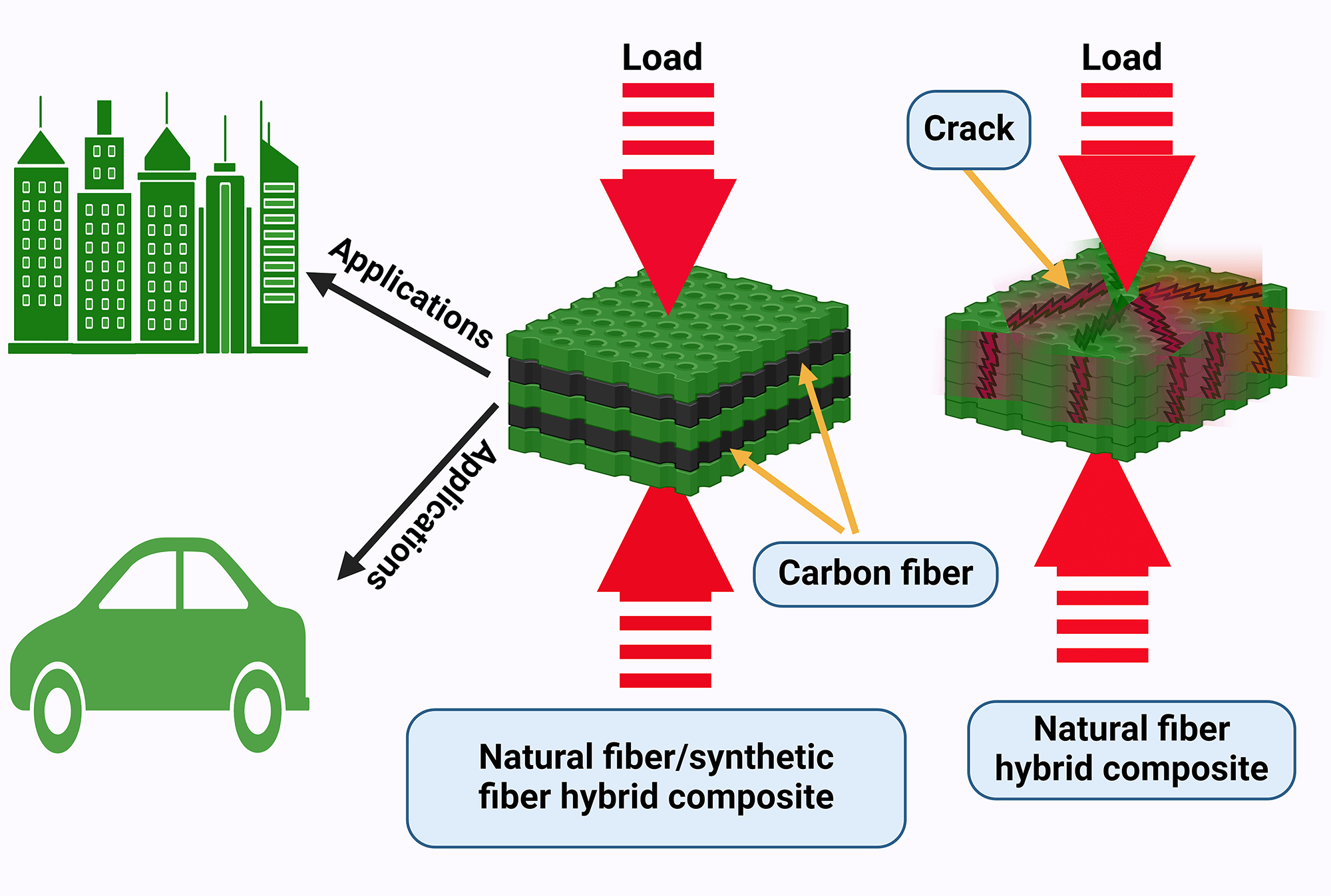 Open Access
Open Access
REVIEW
A Review on the Advancement of Renewable Natural Fiber Hybrid Composites: Prospects, Challenges, and Industrial Applications
1 Center of Excellence Geopolymer & Green Technology (CEGeoGTech), Universiti Malaysia Perlis, Arau, 02600, Malaysia
2 Faculty of Chemical Engineering Technology, Universiti Malaysia Perlis (UniMAP), Arau, 02600, Malaysia
3 Department of Materials Engineering, University of Technology, Baghdad, 10070, Iraq
4 Department of Chemical Materials, University of Bagdad College of Education for Pure Science Ibn-Alhaitham, Baghdad, 10001, Iraq
5 Department of Computer Techniques Engineering, Al-Rafidain University College, Baghdad, 10001, Iraq
6 Faculty of Electronics Engineering Technology, Universiti Malaysia Perlis, Kampus Uniciti Alam Sg. Chuchuh, Perlis, 02100, Malaysia
7 Research Center (NANOCAT), University of Malaya, Kuala Lumpur, 50603, Malaysia
8 Institute of Nano Electronic Engineering, Universiti Malaysia Perlis, Perlis, 01000, Malaysia
9 Center for Global Health Research, Saveetha Medical College & Hospital, Saveetha Institute of Medical and Technical Sciences (SIMATS), Tamil Nadu, 602 105, India
* Corresponding Author: Mohammed Mohammed. Email:
Journal of Renewable Materials 2024, 12(7), 1237-1290. https://doi.org/10.32604/jrm.2024.051201
Received 29 February 2024; Accepted 13 June 2024; Issue published 21 August 2024
Abstract
Natural fibre (NFR) reinforced functional polymer composites are quickly becoming an indispensable sustainable material in the transportation industry because of their lightweight, lower cost in manufacture, and adaptability to a wide variety of goods. However, the major difficulties of using these fibres are their existing poor dimensional stability and the extreme hydrophilicity. In assessing the mechanical properties (MP) of composites, the interfacial bonding (IB) happening between the NFR and the polymer matrix (PM) plays an incredibly significant role. When compared to NFR/synthetic fibre hybrid composites, hybrid composites (HC) made up of two separate NFR are less prevalent; yet, these hybrid composites also have the potential to be valuable materials in terms of environmental issues. A new dimension to the flexibility of composites reinforced with NFR is added by the cost-effective manufacture of hybrid composites utilising NFR. The purpose of this study is to offer an overview of the key findings that were presented on hybrid composites. The emphasis was focused on the factors that influence the performance of the natural fiber composites, diverse approaches to enhancing MP, physical, electrical, and thermal characteristics of the HC. HC study in polymer science gains interest for applications in construction and automotive industries.Graphic Abstract

Keywords
Cite This Article
 Copyright © 2024 The Author(s). Published by Tech Science Press.
Copyright © 2024 The Author(s). Published by Tech Science Press.This work is licensed under a Creative Commons Attribution 4.0 International License , which permits unrestricted use, distribution, and reproduction in any medium, provided the original work is properly cited.


 Submit a Paper
Submit a Paper Propose a Special lssue
Propose a Special lssue View Full Text
View Full Text Download PDF
Download PDF Downloads
Downloads
 Citation Tools
Citation Tools